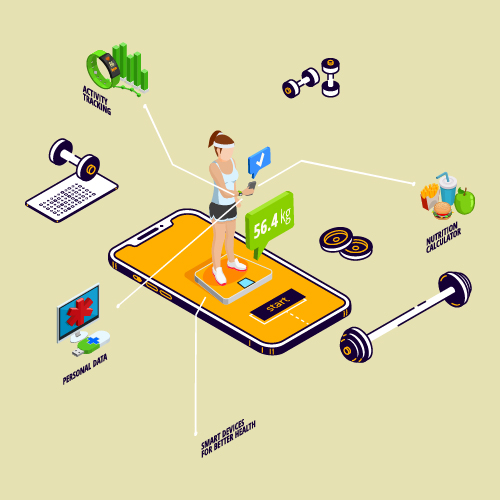How to Develop a Women Health Tracking Application?
The mHealth applications market has developed into a vivid ecosystem. It is not only dynamic but also offers great potential. With mobile technology becoming increasingly popular in the healthcare industry, market prospects for mHealth solutions are tremendous.
Statistics report that 52% of smartphone users gather health-related information on their phones and 93% of doctors believe that mobile applications by reputed healthcare app development company can enhance the quality of patient health.
When the fast-paced digital industry and the slow-paced healthcare sector come together, it is bound to unleash disruptive changes in the market. The past few years witnessed a steep rise in the mHealth applications market due to the adoption of new technologies, new business models, and new avenues, thereby transforming the way people access healthcare.
The innovation in healthcare mobility is accelerating rapidly and it is quite promising. It is evident that these solutions will bring a positive impact on both patient outcomes and accessibility.
According to a report by Statista, the global mHealth market is predicted to reach nearly 100 billion U.S. dollars by the end of 2021 and that implies a fivefold increase from 21 billion dollars in 2016.
For the longest time, fitness tracking, diet and nutrition, disease management, and lifestyle management apps dominated the mHealth market, whereas the market for women health tracking apps remained relatively small.
With 50% of the global population as target customers, FemTech is garnering more and more attention, and rightly so. In May 2018, we saw Fitbit adding the female health tracking functionalities to its app. And soon after, there were quite a few apps covering women’s health needs. Femtech is now on its way to becoming a $50 billion industry by 2025, enhancing the lives of millions of women and improving their access to care.
What is Femtech?
Femtech or female technology refers to software, diagnostics, products, and services that leverage the power of technology to improve women’s health. The popular mHealth apps category is in many ways defining the role of mobile apps in women empowerment. Femtech implies using digital technology to enable patients to access applications and use them to address women’s health concerns.
The term Femtech was coined by the CEO of Clue. Clue is a widely used period-tracking application. Femtech refers to any technology that is intended to improve women’s lives.
Women’s health is often overlooked as a niche market, however, times are changing and this can be attributed to the growth of the ‘she-economy’. Women not only play an increasingly prominent role in the healthcare industry, they also have a higher purchasing power. In fact, it is estimated that women’s economic contribution is projected to surpass the combined GDP of China and the United States by 2021.
FemTech app offers unique features to address all women’s healthcare needs. For instance, female health tracker apps, menstrual tracker, and pregnancy tracker applications are making women’s lives easier. Femtech is not just not another niche, its prominence is growing steadily. Thanks to Femtech mobility solutions, women’s health is not on the backburner anymore.
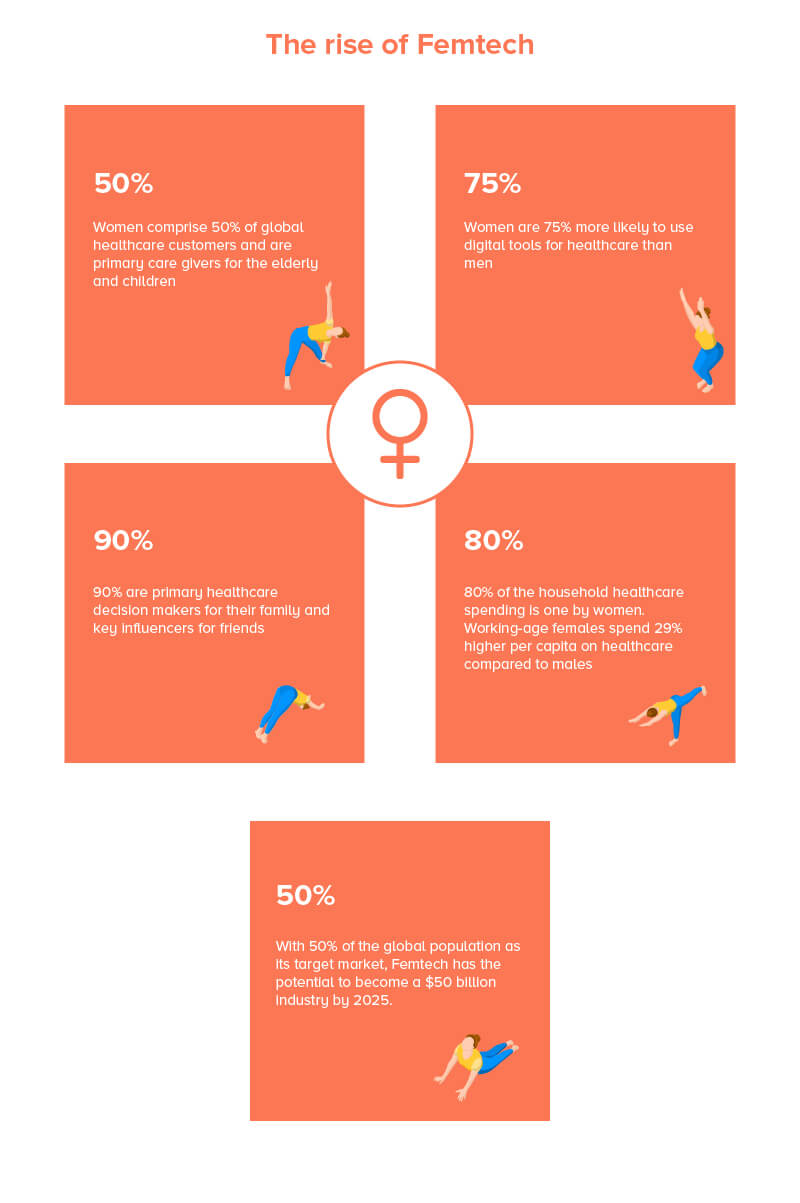
What’s in for Investors in the Femtech Industry?
The global women’s health app market size is expected to reach $3.9 billion by 2026 at a compounded annual growth rate (CAGR) of 17.9%, according to a new report by Grand View Research, San Francisco.
With technology addressing the many concerns, women are now more in charge of their bodies and have a strong understanding of their wellbeing. Health and wellness are taking the center stage with a multitude of global campaigns echoing the same.
In the mhealth apps category, apps for women’s health are the fourth most popular among adults and the second most popular among adolescent women.
Femtech has also received funding of $800 million in the past 12 months and it truly is the right time to partner with a health tracking app development company and tap into this growth opportunity.
Benefits of Women Health Tracking App
Health and wellness apps for women primarily consist of period calendars or trackers. Such solutions are intended to help women track their menstrual cycles, predict ovulation, evaluate their moods, overall body health, and prevent them from taking birth control pills, etc. Such applications help women reduce their risk of unwanted pregnancies, better understand their bodies, and know how to respond to different health issues.
Furthermore, these women health tracking applications can be used not only by women but also by their physicians and doctors. Doctors may use the data that these women health tracking application provide to better understand the health of their patients.
Provides women control of their health and lives
Femtech app aims to provide women more power over their health, joy, and wellbeing. Female health tracking apps provide good insights into body problems and help women make informed decisions when the need arises.
It also fosters scientific awareness about our bodily conditions. Femtech provides opportunities to better understand female bodies, hormones, etc.
Timely diagnosis and treatment of health issues
In addition to helping women understand their bodies and providing comprehensive medical expertise, Femtech also enables women to identify and treat their health issues timely. For instance, if periods are routinely monitored, abnormal cycles are detected well- in-time, many health issues will be diagnosed as early as possible.
Improving access to care in remote areas
It is the need of the hour to make healthcare accessible to women. Women’s healthcare issues are often considered taboo subjects which makes it even harder for them to seek healthcare advice and medical care, particularly for infertility, menstrual health, birth control, and sexual well-being.
By providing robust healthcare mobility solutions, digital healthcare chains are making healthcare accessible virtually to women in the comfort of their homes.
Types of Women Health Tracking apps
Today a number of apps for women’s health are available, and they are becoming widely popular due to the convenience they offer. Such apps help you put your life on track, by monitoring health concerns based on your age, weight, cycle time, flow, fitness target, lifestyle, etc.
Due to the proliferation of smartphones, health and fitness apps are quickly becoming mainstream in the average woman’s app list. The main types of women health tracking apps are as follows:
1. Period and Fertility Tracker app for Women:
The most in-demand type of mhealth app development is the Period and fertility tracking category. Such apps produce reliable information based on the data women provide and help them monitor their cycle and measure their fertility. Although each women health tracking application has its own algorithm, they all rely on the user’s specific input of data, to better determine the estimated ovulation day, a fertile window of five to six days, and the date of your next cycle.
Such menstruation tracking apps work both ways and help both – women who want to get pregnant or women who want to prevent accidental pregnancies. Besides monitoring menstrual cycles, these menstruation tracking apps also track basal body temperatures and come with features like logging in with PMS symptoms in the calendar to track behavior.
2. Pregnancy Tracker Apps:
While applications do not really substitute medical care needs, such apps are of great help during pregnancy. For moms or moms-to-be, a pregnancy app helps keep track of body changes while advising moms on what’s normal and what isn’t during a given time.
Apart from pregnancy planning advice, it also provides suggestions when it comes to a healthy diet plan while pregnant. Pregnancy tracking apps are super-helpful in tracking the growth of your baby and the changes in your body during pregnancy. Combating morning sickness, arranging doctor’s appointments, remembering to take your prenatal vitamins, monitoring your fast-growing baby — there’s too much to keep tabs on with these applications.
3. Birth Control Apps:
Birth control apps can be customized to your specific birth control methods to report your symptom history and contraceptive use. These apps can predict the most fertile days in your cycle to help in natural birth control. It charts the fertility window of a woman over a period of time, so that women know which days to avoid intercourse.
For pill users, it puts up a reminder to take the pill or notifies them when the user is fertile or not. Studies suggest that the consistent use of birth tracker apps provides more accurate results.
Stages to Develop a Women Health Tracking App
Step 1: Study the competition
To create something unique and engaging, you need to do a comparative study of all your competitors in the market. Study the female health tracking apps that have already succeeded in the market. Learn from the wins and mistakes of your competitors.
Some of the popular women health tracking apps in the market are:
![]()
1. Clue
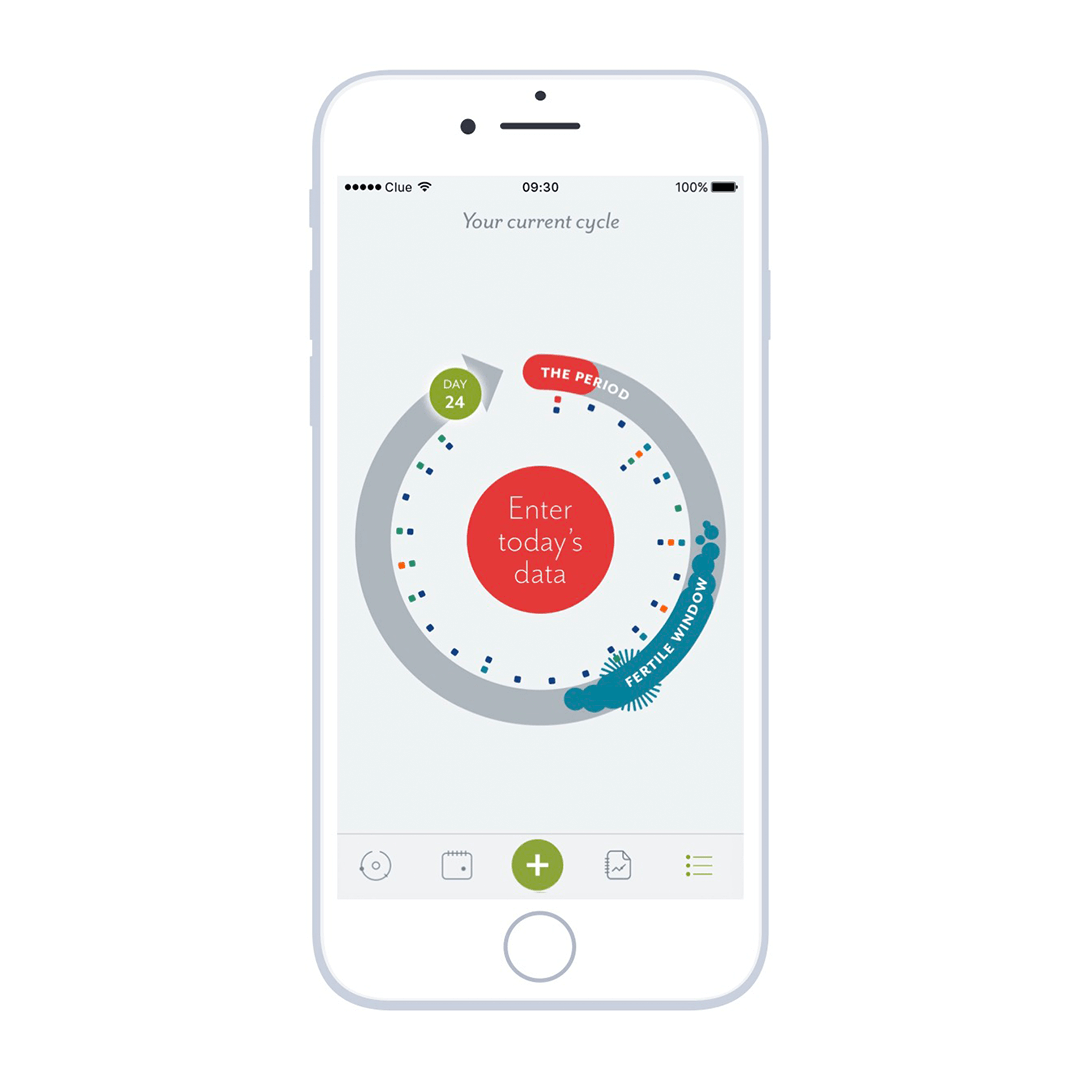
Clue is the most popular health tracker app for accurate period monitoring. It is the top-rated period tracker and ovulation app that helps you identify unique menstrual cycle patterns. This women’s health application uses machine learning to predict your periods, PMS, inform you about your fertile and infertile days, and help you avoid unwanted pregnancy. This feature-packed app helps you monitor all the changes in your menstrual cycle in a period calendar, including ovulation, fertility, cravings, moods, and how each of these is linked to your health.
2. Flo
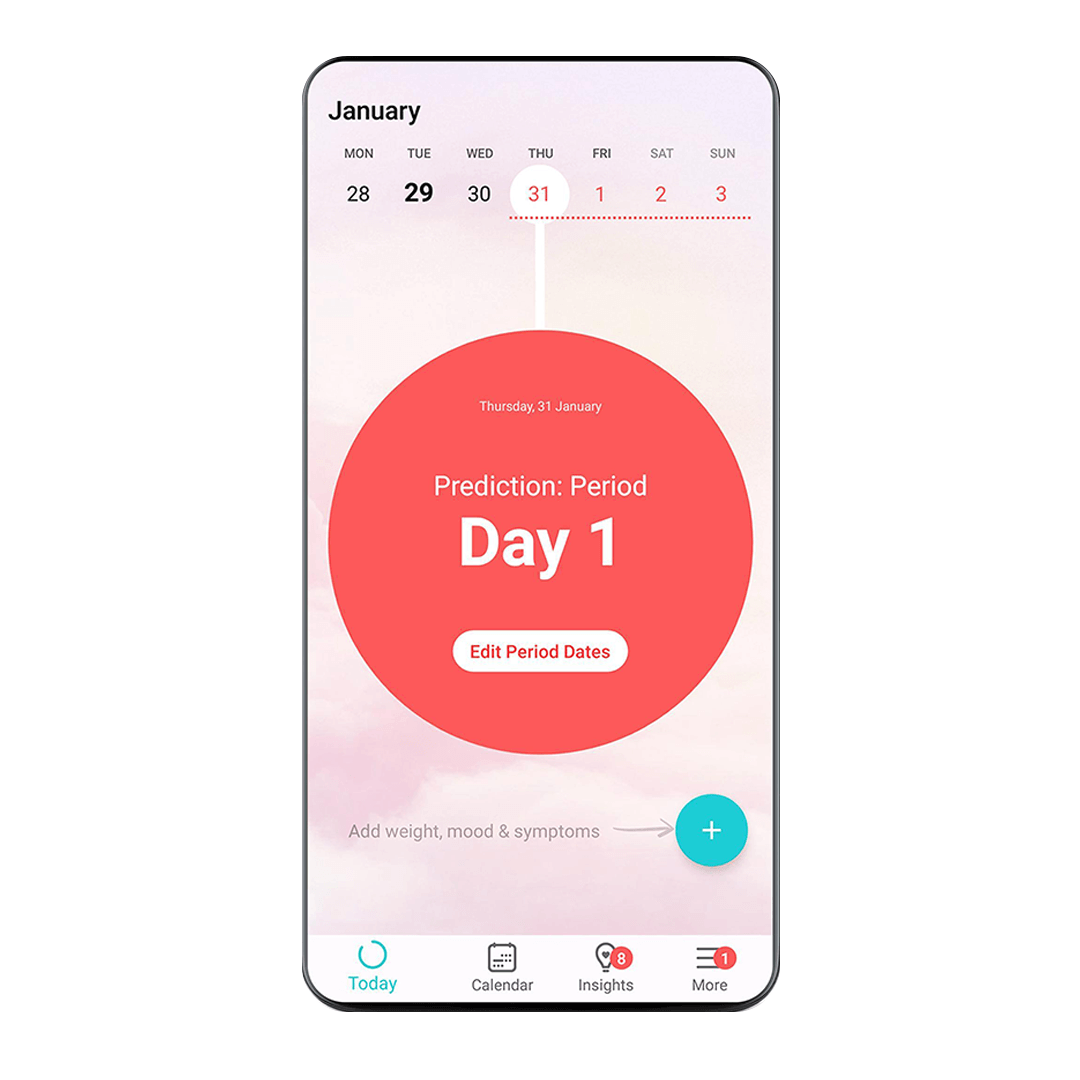
Flo is an AI-based period tracker, ovulation, and fertility calendar used by women across 30 countries. It is known for being a precise time tracker, accurate pregnancy calculator, ovulation calendar, and much more. Flo uses AI in analyzing the data that users enter. Logging consistently ensures that AI gives the most accurate prediction of ovulation, fertility, and overall menstrual health.
3. Natural Cycles
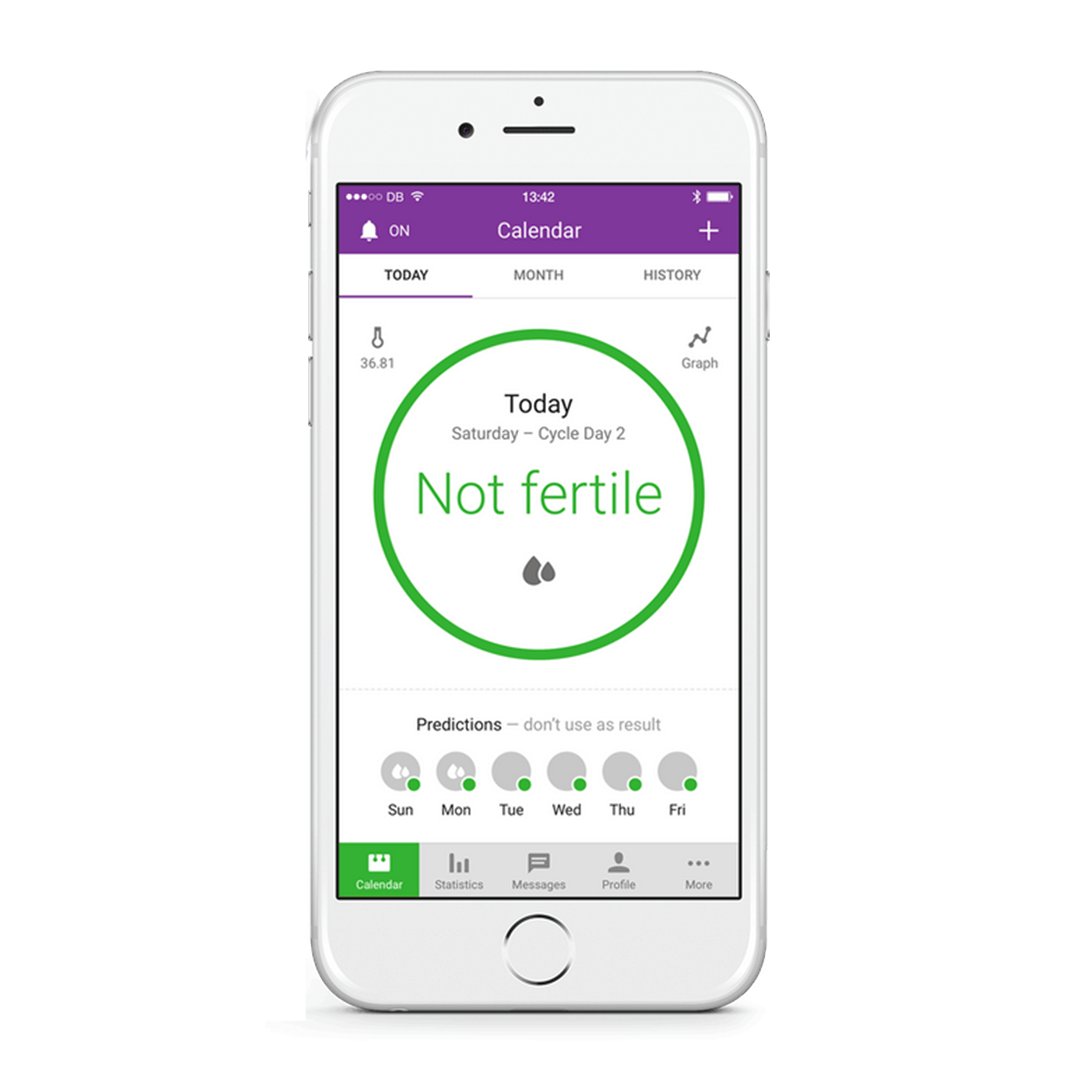
Natural Cycles is a cycle tracker and contraceptive app. While most mobile applications related to women fitness tracking allow you to monitor and track your basal body temperature on a regular basis, Natural Cycles is the only one that comes with a basal body thermometer that tests your temperature to one-hundredth of a degree instead of the usual one-tenth. The more you measure, the better the algorithm of the app gets when learning your specific cycle.
It helps women keep a track of their cycles and allows them to choose if they want to avoid pregnancy or plan pregnancy.
4. Eve
Eve was launched in 2015 by a data science company Glow. This period tracking app is loved for its clean interface and unique features such as Cycloscope (it displays your current cycle phase together with possible current health symptoms). This one of the best apps for women’s health also features a large built-in social network where users can share their experience and tips. You can review past periods, menstrual cycles, PMS symptoms and ovulation dates.
Step 2: Features To Include In Women Health Tracking Apps
Development and functionality go hand in hand to make an application more beneficial for customers. Features in women health tracking apps should be the main concern, but the app should also render a splendid user journey. If you have been wondering how to create and grow your women health tracking app, mentioned below are some of the key features of female health app development that you should keep in mind:
1. Onboarding:
To get users onboard you will have to ensure that the app is convenient for them. You can either use the standard email and password approach to get users to sign up for the app, or opt for social media integration. Onboarding helps users get the idea behind the app quickly, thereby enhancing user experience and helping you retain your user base.
You can choose between coach screens (which normally appear when starting an app), instructional overlays, or inboarding (a process where users discover an app while actually using it).
2. Detailed Health Profile:
To avoid scaring users with a complicated registration process, you can recommend that they skip signing up and create a simple user profile by filling in basic health details that the application uses.
One of the rules that our healthcare app developers follow is garnering only the necessary data that is required from the user such as height, weight, ailments, allergies, and period date.
Since your users are already confiding their most private information to you, so try not to burden them with any extra questions. Instead, concentrate on details that can actually allow you to enhance the customer experience – by personalizing content.
3. Period Tracker:
This functionality is a must when developing women’s fitness applications and the market for such apps has a wider reach and audience. Most period trackers not only allow women to visually track changes in their state and wellbeing during the cycle but also allow them to evaluate those changes.
The present-day of the cycle, the fertility period, the approximate date of the next menstruation, upcoming PMS, and so on are some of the essential features that should be displayed on your progress screen.
Besides providing a good interface to users to track their periods, you should ask your healthcare application development company to create an app which is intuitive and does not overburden users whether you choose to display it through a basic time calendar or an interactive process progress bar.
4. Notifications:
Having the right number of reminders ensures users can remain engaged. Giving reminders in a notification form is often good, as it represents reliability. Notifications in women’s health monitoring applications can be divided into three types: regular log entries, reminders to take medications and reminders about the start of the next phase of the cycle. In order to enhance the usability of your application, based on the review of the activities and information received, you can build in functionality to alert users about potential health concerns. One way to do so is by using algorithms to evaluate symptoms and identify the conditions that cause them the most.
5. Symptom Tracking and Analysis:
Having a symptom tracker helps users find out more about their health and risks by monitoring symptoms and patterns regularly and providing an accurate reading.
For example, modern technologies like AI and machine learning are used in women apps like Flo and Clue to analyze vast amounts of collective user data while also offering customized insights into safety for each user. With symptom tracker functionality, you can explore more about your body, cycle, ovulation, and fertility.
By adding wearable support in your app, your users will be able to automatically add health data to their everyday logs–such as sleep time, blood pressure, heart rate, and weight–while providing you more data to analyze.
6. Integration:
With the ability to incorporate valuable information, the app can provide reliable data not only for research and further advancement of the application but also for the health and well-being of its users.
7. Share Information:
Many period trackers have the option for users to share certain details with their partners. For instance, in Clue, this feature is called Clue Connect.
Clue recommends it to start an open conversation on uncomfortable topics for most people: menstruation, premenstrual syndrome (PMS), and fertility.
However, the possibility of exchanging or synchronizing health information can be beneficial not only for spouses, users can share the details with their doctors as well.
8. Community or Social Network:
It’s important to have a community for app users where they can share their experiences and even ask other members for feedback.
For instance, in the Pink Pad app, women share stories with its built-in social network, discuss symptoms, and connect with the group in several different ways. With a built-in community feature, if users may have some queries, they will be able to discuss it with ease with fellow users. This will encourage users to share their knowledge and increase their trust in the app.
9. Digital Consultation:
To provide users with a reliable communication channel, you can provide them with digital consultation. It is simple and realistic to get help online. Even with a whole built-in group to talk to or a bunch of health tips generated by AI, women may still have a lot of tricky questions to ask a real specialist. Here’s where a digital consultation can come to aid.
You can partner with medical professionals who can offer online advice, recommend treatment plans, and even administer medication through text messages or voice calls. In fact, there are chances that your partnered healthcare app development company USA would already have a link with the medical professionals.
10. Refer and Earn:
This feature of when you develop a women’s health tracking app will allow you to extend your user base and enable users to enjoy benefits in return for helping out.
11. Password Protection
To protect user’s personal information and ensure data protection, it’s important to enable password protection. To make authorization easier and faster, you can enable TouchID or Face ID authentication in your app.
12. Graphs
This functionality offers a graphical view for cycle, fertility, ovulation, and symptoms history. Also, it allows the users to analyze the cycle, weight changes, activity during menstrual cycle, and the duration of period. There is a graphical view of ovulation and basal body temperature as well.
Step 3: Define How To Make Money From Your Women’s Health Tracking App?
The growth and benefit of women’s health tracking applications, as we have seen throughout the article, is a sign of how profitable the category is set to be in the coming time. But in order to truly join the revenue benefits, you should know the many ways to earn money through a women’s health tracking app.
- In-app purchase – You can offer a premium version of your app with features like profile customization, one on one communication with the medical professionals, or simply have an ad-free experience.
- In-app advertisement – Deploying an app with in-app advertisement functionality can be a great way to start getting revenues. Although, in order to not tick the users off, be considerate of the number of ads, the place where they’ll appear and their duration.
- Paid app – If you truly believe in the idea of your app and believe that it is a niche in the domain, you can think of keeping it a paid right from the beginning. The option can work great in case of iOS since the revenue count on the platform is much greater than Android.
Step 4: Consider Challenges in Developing Women Health Tracking Apps
While it may seem like you know everything that there is about building your own mobile healthcare solution, there are certain challenges that could arise in women health tracking app development, so it is important to consider the following:
1. Experts and Specialists:
Having experts and specialists onboard play a defining role. Without the data collection does not turn into analytical accuracy. To help you interpret data and create a powerful health solution that collects information for millions of women’s symptoms and cycles, it is essential to have experts and specialists on board.
For instance, Clue cooperates with the best medical professionals which has led to the app top the charts for both Android and iOS.
2. Design:
Every wellness software development company will tell you how important a good intuitive design is for a women’s health tracking app. The visual appeal of a product plays a vital role in keeping users engaged. Women also mentioned that they don’t want anyone to see their welcome screen while they are logging into their period.
You should also take sexual diversity into account. Clue is well aware that not everyone who tracks a period identifies as a woman. That’s why the application uses neutral UI design and UX copy.
3. Privacy of data is crucial:
Privacy of user data is highly essential. It quite depends on how the app uses the data collected, although the Health Insurance Portability Accountability Act (HIPAA) does not apply in most health and fitness applications.
However, it is important to note that there are countries (especially most European countries) that require compliance with the General Data Protection Regulation (GDPR).
When building a mHealth solution, you should be aware of and adhere to all compliance standards.
Step 5: Text and Fix Bugs
While it may sound too obvious, health apps for women should be tested by women, ideally in the context of real-life situations:
- How long does it take for the data to load or process?
- Are users comfortable with the interface?
Answering questions like these will help deliver a flawless user experience. In addition, automated tests during the app development stage performed by developers will help identify issues and fix them immediately.
Step 6: Release and Maintain
Let’s say you have built a period tracker app and thoroughly tested it. So now it’s time to submit the app to Google Play and App Store. If you want this process to go smoothly, then allocate at least a week for the app submission process. The app submission can be a bit intimidating, so it’s advisable to consult a qualified health app development team.
After the app becomes available for download in the app stores, it’s time to celebrate. But keep monitoring its performance using analytics tools such as Google Analytics or Mixpanel. You will also need to update the app as new mobile OS versions become available and bring more exciting features for users.
Conclusion
Femtech is setting its mark in the industry today and not because it is another niche or a growing trend. It is prioritizing women’s healthcare needs and improving their access to care.
So if you want to tap into this market opportunity, we will be a great partner for you. As a leading healthcare app development services, we have developed hundreds of mHealth solutions. We have rich domain expertise in wellness app development service and can help you translate your idea into a million users’ reality with custom mHealth solutions.

strategies your digital product..
